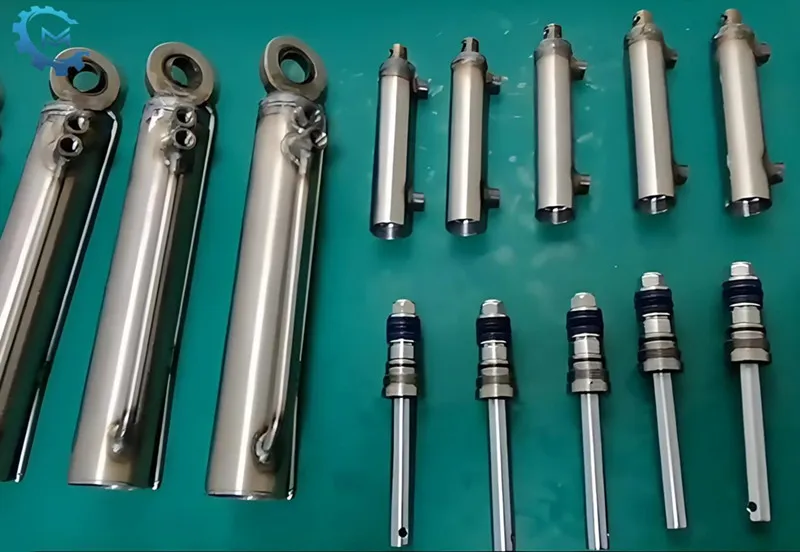- English
- Español
- Português
- русский
- Français
- 日本語
- Deutsch
- tiếng Việt
- Italiano
- Nederlands
- ภาษาไทย
- Polski
- 한국어
- Svenska
- magyar
- Malay
- বাংলা ভাষার
- Dansk
- Suomi
- हिन्दी
- Pilipino
- Türkçe
- Gaeilge
- العربية
- Indonesia
- Norsk
- تمل
- český
- ελληνικά
- український
- Javanese
- فارسی
- தமிழ்
- తెలుగు
- नेपाली
- Burmese
- български
- ລາວ
- Latine
- Қазақша
- Euskal
- Azərbaycan
- Slovenský jazyk
- Македонски
- Lietuvos
- Eesti Keel
- Română
- Slovenski
- मराठी
- Srpski језик
What causes the hydraulic cylinder piston rod to vibrate?
2025-05-27
In the hydraulic system, the hydraulic cylinder piston rod is one of the core components, and its performance and quality are directly related to the stable operation of the entire system. As a hydraulic cylinder manufacturer, we are well aware that piston rod failure will bring many inconveniences and losses to customers. Therefore, exploration of the causes of piston rod failure is crucial for us to improve production processes and product quality.
Reasons for vibration of hydraulic cylinder piston rod
1. Oil level is too low
When the shaking phenomenon occurs, you should first check whether the working oil level of the hydraulic cylinder is too low. If it is too low, the mobile hydraulic pump station will suck in gas, causing the hydraulic cylinder piston rod to shake
2. The oil temperature is too high
Also, check whether the hydraulic oil temperature is too high. If the oil temperature is too high, it will cause the main oil cylinder piston support ring to bite, so that it cannot operate normally and shake.
3. The load is too high
When shaking, you should also check whether the main overflow valve overflows frequently due to excessive load during the pumping process, causing an impact.
4. Main overflow valve failure
Check whether the main overflow valve is faulty and often overflows. If so, we need to repair the main overflow valve, replace the damaged parts and adjust them.
5. Unloading valve failure
Check whether the auxiliary electro-hydraulic valve and unloading valve are faulty. Because they have a fault, the unloading time of the distribution valve oil pump is reduced, and they are often in high-load operation. At this time, the faults of the two valves need to be eliminated.
6. Hydraulic oil viscosity is too low
If the hydraulic oil has been changed, check whether the viscosity of the oil is too low, causing a large amount of leakage inside the oil pump. If so, replace the hydraulic oil with a suitable viscosity.
7. Oil pump failure
Check whether the oil pump is hot to determine whether the oil temperature rises due to the failure of the oil pump. If the oil pump is not heated due to the low viscosity of the oil, then the oil pump needs to be disassembled and inspected to find out the cause of the failure and eliminate it.
8. Cooler failure
Check whether the cooling water of the cooler is smooth and the cooling water leakage temperature is too high. If so, reduce the cooling water leakage temperature and keep it unobstructed.
Conclusion
We are well aware that the causes of piston rod failure are complex and diverse, involving factors such as materials, processing, design, assembly, etc. As long as these factors are resolved, such situations can be prevented. In addition, we will continue to start from these aspects, continuously optimize production processes, improve product quality, and provide customers with more reliable and durable hydraulic cylinder products.





